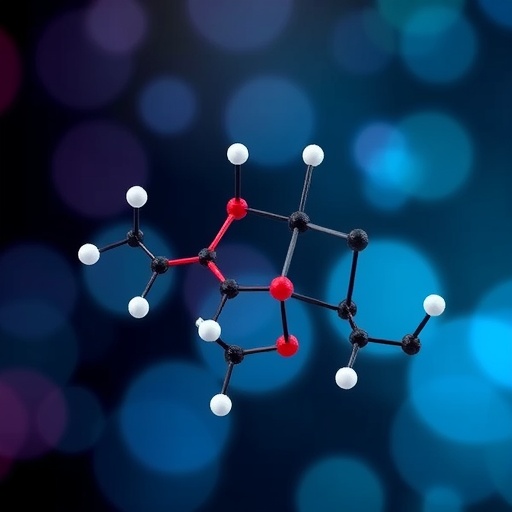
Credit: Based on data from VLT/ESO.
- Great Cold Spot comparable in scale to famous Great Red Spot (24,000 km west-east and 12,000 km north-south)
- The phenomenon, only recently observed, may have existed for thousands of years
- First direct evidence of a sustained weather system generated by polar aurorae and opens possibility on other planets
A second Great Spot has been discovered on Jupiter by University of Leicester astronomers, rivalling the scale of the planet's famous Great Red Spot and created by the powerful energies exerted by the great planet's polar aurorae.
Dubbed the 'Great Cold Spot', it has been observed as a localised dark spot, up to 24,000 km in longitude and 12,000 km in latitude, in the gas giant's thin high-altitude thermosphere, that is around 200K (Kelvin) cooler than the surrounding atmosphere, which can range in temperature between 700K (426ºC) and 1000K (726ºC).
The results are published today (11 April) in Geophysical Research Letters.
Dr Tom Stallard, Associate Professor in Planetary Astronomy and lead author of the study, said: "This is the first time any weather feature in Jupiter's upper atmosphere has been observed away from the planet's bright aurorae.
"The Great Cold Spot is much more volatile than the slowly changing Great Red Spot, changing dramatically in shape and size over only a few days and weeks, but it has re-appeared for as long as we have data to search for it, for over 15 years. That suggests that it continually reforms itself, and as a result it might be as old as the aurorae that form it – perhaps many thousands of years old."
The Great Cold Spot is thought to be caused by the effects of the magnetic field of the planet, with the massive planet's spectacular polar aurorae driving energy into the atmosphere in the form of heat flowing around the planet.
This creates a region of cooling in the thermosphere, the boundary layer between the underlying atmosphere and the vacuum of space. Although we can't be sure what drives this weather feature, a sustained cooling is very likely to drive a vortex similar to the Great Red Spot.
The astronomers used the CRIRES instrument on the Very Large Telescope (VLT) to observe spectral emissions of H3+, an ion of hydrogen present in large amounts in Jupiter's atmosphere, which allowed the scientists to map the mean temperature and density of the planet's atmosphere. They then used images of H3+ emission from Jupiter's ionosphere taken by NASA's InfraRed Telescope Facility between 1995-2000 to compare.
Through combining images taken over a period of time, including over 13,000 images taken over more than 40 nights by the InfraRed Telescope Facility, the astronomers revealed the presence of the Great Cold Spot as an area of darkness amongst the hot environment of Jupiter's upper atmosphere.
Dr Stallard, who is funded by the Science and Technology Facilities Council, added: "What is surprising at Jupiter is that, unlike weather systems on Earth, the Great Cold Spot has been observed at the same place across 15 years. That makes it more comparable to weather systems in Jupiter's lower atmosphere, like the Great Red Spot.
"Observations and modelling of Earth's upper atmosphere have shown that, on the short term, there may be changes in the temperature and density of the upper atmosphere.
"The two main differences are firstly that Earth's aurora sees dramatic changes caused by activity from the Sun, whereas Jupiter's aurora are dominated by gases from the volcanic moon Io, which are relatively slow and steady, and secondly that the atmospheric flows generated by Earth's aurora can drive heat quickly across the whole planet, making the upper atmosphere ring like a bell, while Jupiter's fast spin traps this energy nearer the poles."
Dr Stallard added: "The detection of the Great Cold Spot was a real surprise to us, but there are indications that other features might also exist in Jupiter's upper atmosphere. Our next step will be to look for other features in the upper atmosphere, as well as investigating the Great Cold Spot itself in more detail.
"The Juno spacecraft is currently in orbit around Jupiter and the observations of Jupiter's aurora and upper atmosphere by the JIRAM instrument that have been released so far already provide a wealth of new information about the planet. When combined with our ongoing campaign of observations using telescopes on Earth, we hope to gain a much better understanding of this weather system in the next few years."
###
The full study in Geophysical Research Letters is available online at: http://onlinelibrary.wiley.com/doi/10.1002/2016GL071956/full
Notes to editors:
For more information contact Dr Tom Stallard on:
Tel: 0116 252 3589
E-mail: [email protected]
Watch a video interview with Dr Tom Stallard about the 'Great Cold Spot': https://www.youtube.com/watch?v=auDuqsulWYA
Download visualisations and video of the 'Great Cold Spot': https://www.dropbox.com/sh/dm399mjhipr0mii/AACSVpyhkBvTd30kWcB4hJWEa?dl=0
The Science and Technology Facilities Council is keeping the UK at the forefront of international science and tackling some of the most significant challenges facing society such as meeting our future energy needs, monitoring and understanding climate change, and global security. The Council has a broad science portfolio including supporting UK work in space and ground-based astronomy technologies and research.
http://www.stfc.ac.uk/
Media Contact
Tom Stallard
[email protected]
44-011-625-23589
@UoLNewsCentre
http://www.leicester.ac.uk
############
Story Source: Materials provided by Scienmag




